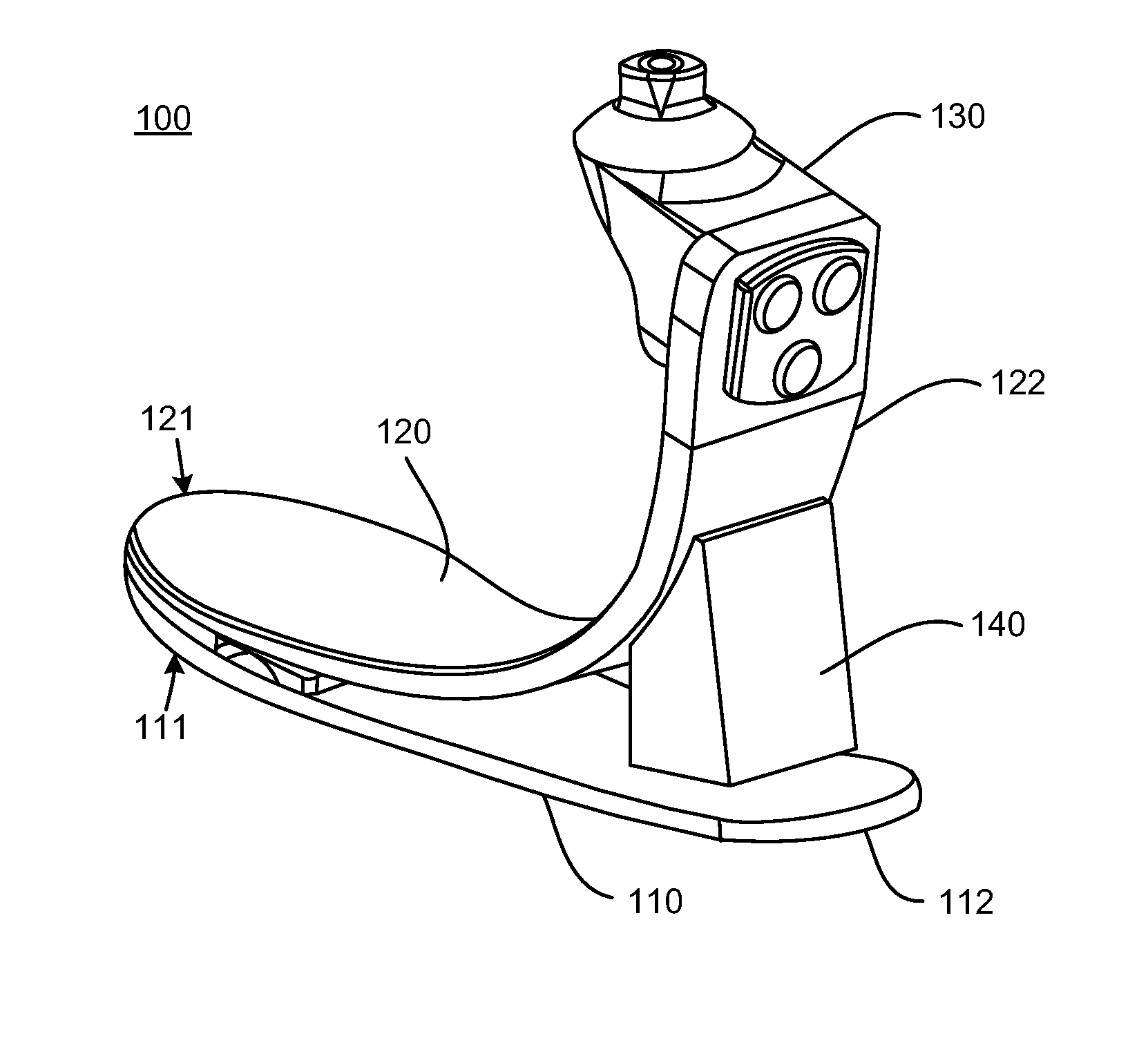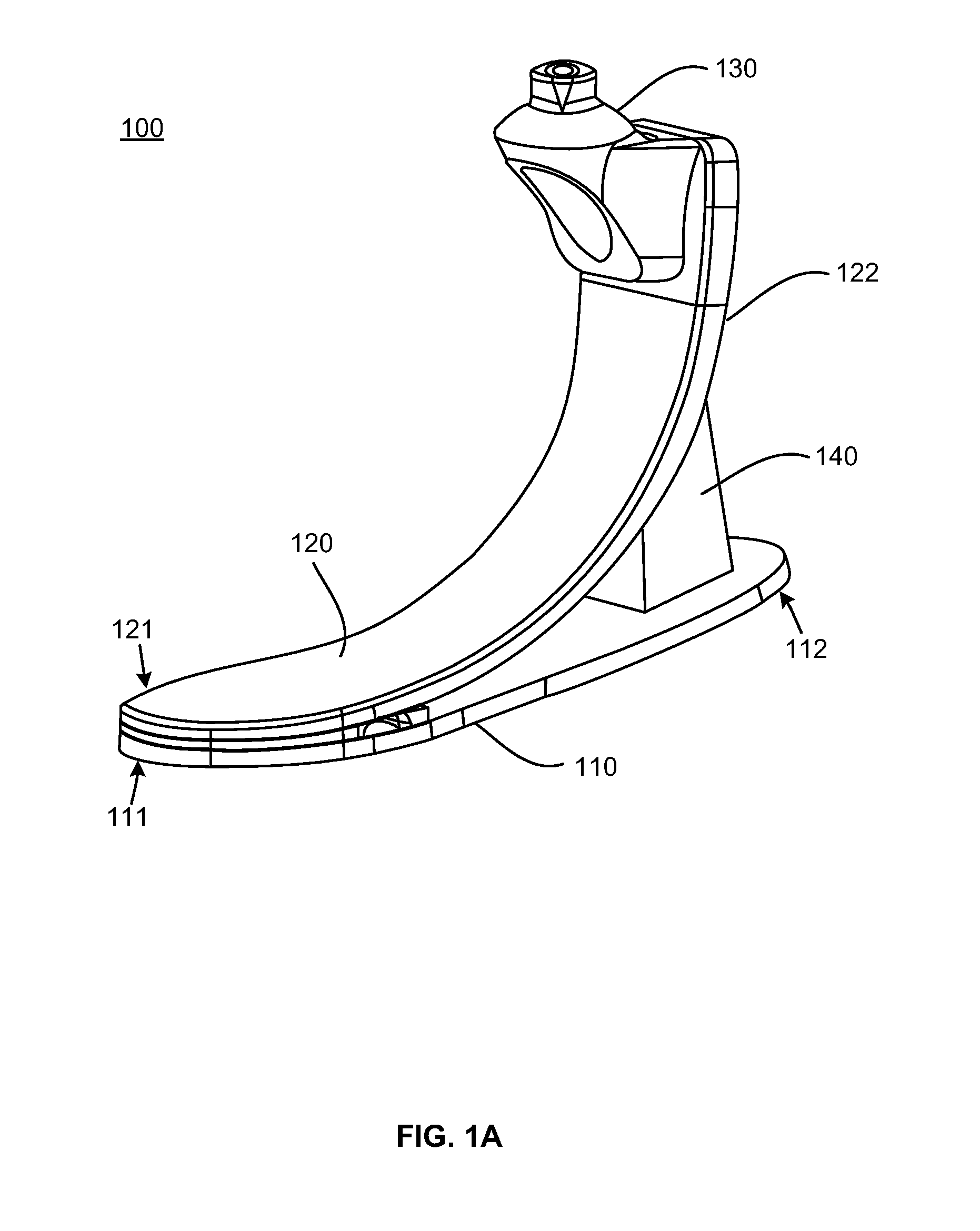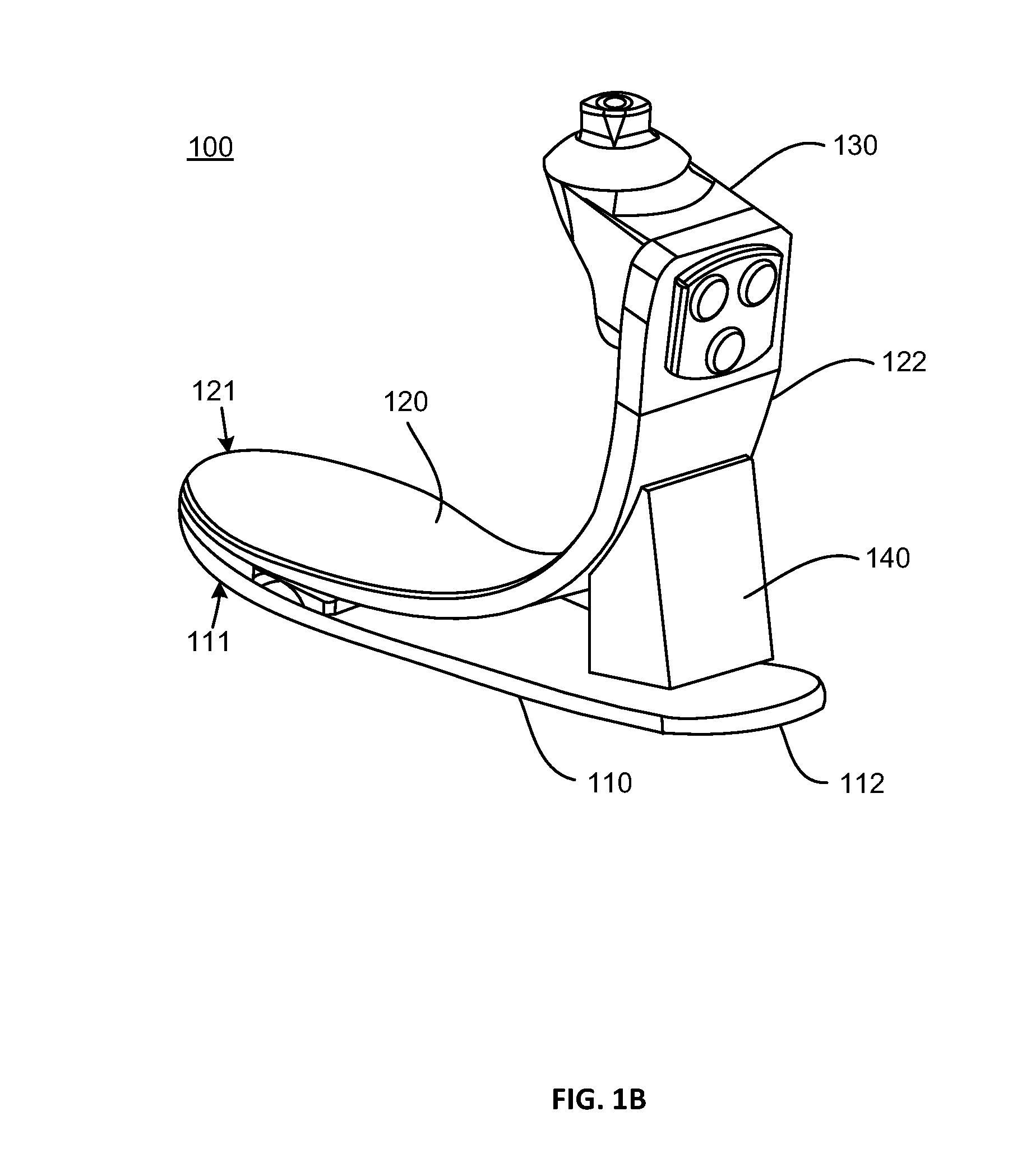Compression heel prosthetic foot
a prosthetic foot and compression heel technology, applied in the field of prosthetic feet, can solve the problems of increasing the risk of injury to an amputee using the foot, creating instability for users, and forcing a constant imbalance or rebalance of postur
- Summary
- Abstract
- Description
- Claims
- Application Information
AI Technical Summary
Benefits of technology
Problems solved by technology
Method used
Image
Examples
Embodiment Construction
[0015]While exemplary embodiments are described herein in sufficient detail to enable those skilled in the art to practice the invention, it should be understood that other embodiments may be realized and that logical structural, material, and mechanical changes may be made without departing from the spirit and scope of the invention. Thus, the following descriptions are not intended as a limitation on the use or applicability of the invention, but instead, are provided merely to enable a full and complete description of exemplary embodiments.
[0016]Briefly, in accordance with exemplary embodiments, a prosthetic foot has improvements over a prior art prosthetic foot in that a more natural motion and response of the foot occurs during movement. In particular, the movement of the exemplary prosthetic foot replicates the natural flex of a foot and supplies continuous energy to a person when striding from heel to toe.
[0017]In the exemplary embodiment a prosthetic foot stores energy durin...
PUM
 Login to View More
Login to View More Abstract
Description
Claims
Application Information
 Login to View More
Login to View More - R&D
- Intellectual Property
- Life Sciences
- Materials
- Tech Scout
- Unparalleled Data Quality
- Higher Quality Content
- 60% Fewer Hallucinations
Browse by: Latest US Patents, China's latest patents, Technical Efficacy Thesaurus, Application Domain, Technology Topic, Popular Technical Reports.
© 2025 PatSnap. All rights reserved.Legal|Privacy policy|Modern Slavery Act Transparency Statement|Sitemap|About US| Contact US: help@patsnap.com



